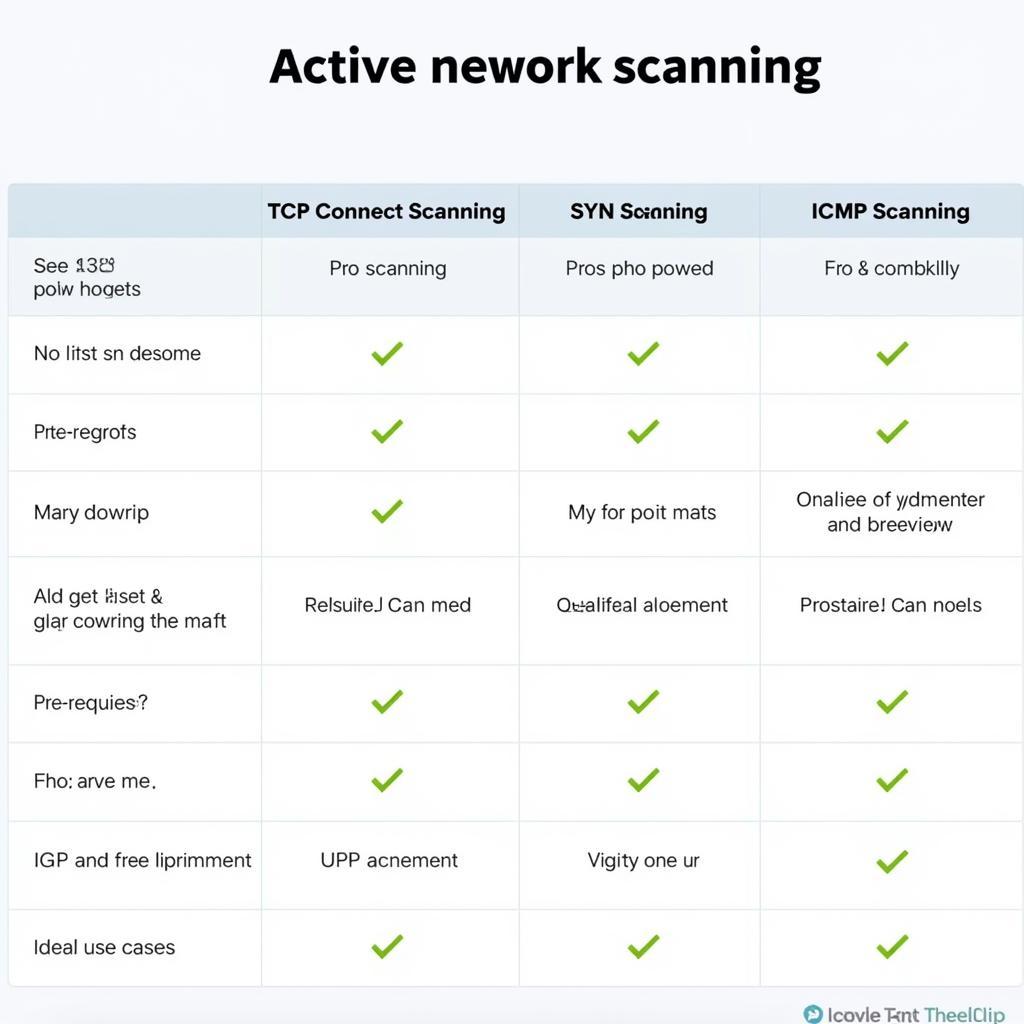Active Network Scanning Tools are essential for any IT professional or cybersecurity enthusiast looking to understand and manage their network’s security posture. These tools actively probe a network and its connected devices, providing valuable insights into potential vulnerabilities and misconfigurations.
 Active Network Scanning in Action
Active Network Scanning in Action
Understanding Active Network Scanning
Unlike passive scanning, which relies on observing network traffic without directly interacting with devices, active scanning involves sending out network probes and analyzing the responses. This proactive approach allows for a more comprehensive understanding of:
- Live hosts: Identifying active devices on the network and their corresponding IP addresses.
- Open ports: Discovering which ports are open on each device and the services running on them.
- Operating systems: Determining the OS running on each device, including version information.
- Vulnerabilities: Detecting known security flaws in operating systems, applications, or network devices.
Types of Active Network Scanning Techniques
Several techniques are employed by active network scanning tools, each with its strengths and weaknesses:
- TCP Connect Scanning: Establishes a full TCP connection to each port, providing reliable results but potentially triggering alerts.
- SYN Scanning: Sends a SYN packet and analyzes the response without establishing a full connection, making it stealthier than TCP Connect Scanning.
- UDP Scanning: Probes UDP ports, which are often used for services like DNS and DHCP, but interpreting results can be challenging.
- ICMP Scanning: Utilizes ICMP echo requests (ping) to determine host availability and network characteristics.
 Comparison of Active Network Scanning Techniques
Comparison of Active Network Scanning Techniques
Benefits of Using Active Network Scanning Tools
Employing active network scanning tools offers several benefits for maintaining a robust security posture:
- Proactive Security: Identifies vulnerabilities before malicious actors can exploit them.
- Network Visibility: Provides a clear picture of all active devices and their security configurations.
- Compliance Auditing: Helps organizations meet regulatory requirements by demonstrating ongoing security assessments.
- Troubleshooting: Assists in diagnosing network connectivity issues and identifying misconfigured devices.
“Regular active network scanning is no longer optional—it’s fundamental to a strong security foundation,” says John Miller, a Senior Cybersecurity Consultant at SecureTech Solutions. “The insights gained from these tools empower organizations to proactively address vulnerabilities and mitigate risks.”
Choosing the Right Active Network Scanning Tool
Selecting the appropriate tool depends on specific requirements, but consider the following factors:
- Ease of use: Opt for a tool with a user-friendly interface and clear reporting capabilities.
- Features: Choose a tool that offers a comprehensive set of scanning techniques and reporting options.
- Scalability: Ensure the tool can handle the size and complexity of your network.
- Cost: Evaluate free and open-source options like open source network scanning tools alongside commercial solutions.
Best Practices for Effective Active Network Scanning
To maximize the effectiveness of active network scanning, consider these best practices:
- Regular Scans: Conduct scans frequently, especially after network changes or software updates.
- Out-of-Band Scanning: Utilize a dedicated scanning appliance or cloud-based solution to minimize network impact.
- Prioritize Findings: Focus on addressing critical vulnerabilities first, based on their potential impact.
- Combine with Vulnerability Management: Integrate scan results with a vulnerability management system for efficient remediation.
 Best Practices for Active Network Scanning
Best Practices for Active Network Scanning
Conclusion
Active network scanning tools are indispensable for maintaining a strong security posture. By understanding the different techniques, benefits, and best practices, organizations can leverage these tools to proactively identify and mitigate vulnerabilities, ensuring the integrity and confidentiality of their network and data. Contact ScanToolUS at +1 (641) 206-8880 or visit our office at 1615 S Laramie Ave, Cicero, IL 60804, USA, for expert guidance on network security and vulnerability scanning solutions tailored to your specific needs.


